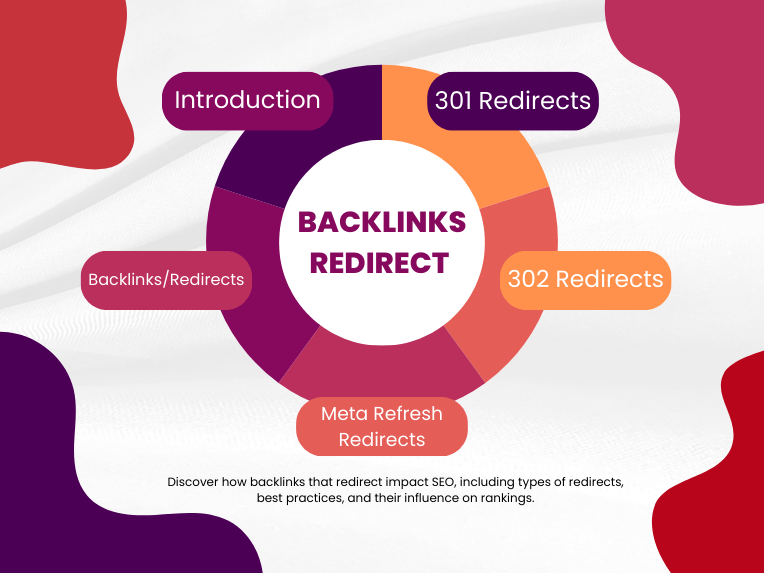Do Backlinks That Redirect Help SEO? Backlinks continue to be essential for establishing authority and raising search engine ranks in the vast field of digital marketing and search engine optimization (SEO). They are seen by search engines like Google as votes of confidence and reliability rather than just hyperlinks connecting pages. Redirects must be put in place, nevertheless, in order to make sure that visitors and search engines are sent to the proper webpage when URLs change or content is changed. This begs the question: do backlinks that redirect still hold SEO value? Let’s explore this topic in detail.
Introduction
Maintaining and enhancing a website’s SEO performance in the ever-changing world of search engine optimization requires an awareness of the relationship between backlinks and redirection. This article explores the idea of backlinks that redirect, their influence on SEO, recommended practices for putting them into practice, typical problems to avoid, and practical examples to show how beneficial they are.
Understanding Backlinks
Understanding backlinks is crucial before moving on to redirects. Backlinks are often referred to as inbound links. Search engines view them as a vote of confidence, signifying the value and merit of a citation for the linked material. Regarding search engine optimization (SEO), backlinks are crucial in establishing the credibility and placement of a website on search engine results pages (SERPs).
What are Redirects in SEO?
Redirects are sets of instructions that move search engines and people automatically from one URL to another. When a website has materially changed, URLs modified, or structural changes made, they are crucial. The primary types of redirects used in SEO include:
- 301 Redirects: A permanent redirect that tells search engines that the original URL has permanently moved to a new location. It passes nearly all of the link equity (ranking power) from the old URL to the new one.
- 302 Redirects: A temporary redirect used when a webpage is for a time being moved to a new location. It does not pass as much link equity as a 301 redirect and is more suitable for short-term changes.
- Meta Refresh Redirects: A less popular procedure in which the browser automatically changes its URL after some time. It’s less effective than 301 and 302 redirects.
Do Backlinks That Redirect Help SEO?
Whether backlinks that reroute maintain their SEO value is the main question at hand. Most of the link equity from the original backlink is transferred to the new URL when a backlink links to a URL that has been redirected via a 301 redirect. This means that the redirected backlink can still positively impact SEO by:
- Preserving Link Equity: Redirects ensure that the authority and trustworthiness associated with the original backlink are passed on to the new URL. This helps in maintaining or even improving the SEO rankings of the redirected page.
- Maintaining User Experience: When a user clicks on a backlink, redirects make sure they get on a useful and pertinent webpage. This boosts overall site engagement metrics, lowers bounce rates, and improves user experience—all of which have an indirect positive impact on SEO performance.
Types of Backlink Redirects
To understand how backlinks that redirect impact SEO, it’s essential to distinguish between different types of redirects and their implications:
301 Permanent Redirects
- Purpose: Used when content has permanently moved to a new location.
- SEO Impact: Passes the majority of link equity to the new URL.
- Best Practices: Recommended for long-term URL changes and content migrations.
302 Temporary Redirects
- Purpose: Indicates that the content has temporarily moved.
- SEO Impact: Does not pass as much link equity as a 301 redirect.
- Best Practices: Suitable for short-term changes or testing new URLs.
Meta Refresh Redirects
- Purpose: Automatically redirects visitors to another URL after a specified time.
- SEO Impact: Less efficient for SEO purposes compared to 301 and 302 redirects.
- Best Practices: Generally not recommended for SEO unless for specific use cases like page transitions.
Benefits of Backlink Redirects
Implementing backlink redirects offers several benefits that contribute to the overall SEO strategy:
- SEO Preservation: Ensures that SEO efforts invested in acquiring backlinks are not lost during website changes or updates.
- Improved User Experience: Users may continue to navigate easily with redirects, which lessens annoyance and increases interest.
- Increased Site Authority: Websites may increase their authority and search engine ranking by using redirects to consolidate link equity.
Best Practices for Implementing Backlink Redirects
Utilize these recommended strategies to optimize the SEO advantages of backlink redirects:
- Employ 301 Redirects for Permanent Changes: To maintain the most link equity, make sure that all permanent URL changes are forwarded using 301 redirects.
- Steer clear of redirect chains: These sequences of many redirections can reduce link equity and mislead search engines. Direct redirects from the original URL to the destination should be the goal.
- Preserve Relevance: To maintain consistency and relevancy in search engine crawling, redirect backlinks to sites that are pertinent to the original material.
- Change Internal Links: To ensure consistency and prevent redirect loops, change internal links on your website to point to the new URLs in addition to creating redirects.
Common Mistakes in Redirecting Backlinks
Avoid these common pitfalls when implementing backlink redirects to prevent negative SEO impacts:
- Incorrect Implementation: Improperly configuring redirects can lead to 404 errors, redirect loops, or loss of link equity.
- Sending Backlinks to Irrelevant Material: Sending backlinks to irrelevant material might mislead visitors and search engines alike, which will lower SEO performance.
- Ignoring Monitoring: Use tools like Google Search Console to track down and quickly fix any problems with redirect performance on a regular basis.
When Should You Use Backlink Redirects?
Strategically implement backlink redirects in the following scenarios to optimize SEO performance:
- URL Changes: When migrating content to new URLs due to rebranding, website restructuring, or optimization efforts.
- Content Updates: When updating or consolidating content across multiple pages to improve relevance and user experience.
Case Studies and Examples
Analyzing actual cases demonstrates how useful backlink redirection is for SEO tactics:
- Case Study 1: If you want to maintain SEO rankings and organic traffic, then your website must go through a rebranding and establish 301 redirects from its old URLs to its new ones.
- Case Study 2: By applying 301 redirects to combine product pages, an e-commerce website increased search engine exposure and increased conversion rates.
Steps to Implement Backlink Redirects
Follow these steps to effectively implement backlink redirects and optimize SEO performance:
- Auditing Already-Existing Backlinks: Use Ahrefs or SEMrush to find every backlink that currently points to your domain.
- Arrange a Redirect Strategy: Depending on the type of change, identify which URLs require redirection and plan a strategy utilizing 301 or 302 redirects.
- Implement Redirects: Use server-side redirects (.htaccess for Apache servers, web. config for IIS servers) or content management system (CMS) plugins to set up redirects.
- Test and Validate: Make sure every redirect works properly and doesn’t lead to broken links or problems by testing it.
- Track Results: Keep a close eye on how redirection affects SEO metrics like ranks, organic traffic, and backlink profiles.
Monitoring and Maintaining Redirects
Ongoing monitoring and maintenance are essential to ensure that backlink redirects continue to benefit SEO efforts:
- Use Google Search Console: Monitor crawl errors and index coverage to detect any issues with redirects.
- Check Analytics: Analyze traffic patterns and user behavior to assess the impact of redirects on site performance.
FAQs About Backlinks and Redirects
What are backlink redirects?
In order to maintain SEO value and guarantee that readers are redirected to pertinent content, backlink redirects entail rerouting a URL with inbound links to a new destination URL.
How do 301 redirects impact SEO?
301 redirects pass nearly all of the link equity from the original URL to the new one, helping to maintain or improve SEO rankings.
Can redirects harm my SEO efforts?
Yes, Because they confuse search engines and reduce link equity, poorly executed redirects—such as redirect chains or redirects to unrelated content—may have a negative impact on SEO performance.
How long do redirects take to show SEO impact?
While most redirects happen instantly, it might take some time for search engines to scan the new URL and update their indexes.
Should I use redirects for all backlinks?
Redirects should be used strategically, focusing on preserving link equity, maintaining relevance, and optimizing user experience for each backlink.
Conclusion
In conclusion, backlinks that redirect can significantly aid SEO efforts when implemented correctly. Websites may retain link equity, SEO rankings, and user experience by employing 301 redirects for permanent updates and following best practices. Redirects must be constantly checked and updated to make sure they are still serving SEO purposes.
Digital marketers may use backlinks and redirection to their advantage in order to drive organic traffic and improve search engine results by being aware of the subtle differences between these two techniques. Websites may optimize their backlink profile for search engine optimization and maintain their competitive edge in the digital world by giving priority to user experience, quality, and relevancy.


Thank you for your sharing. I am worried that I lack creative ideas. It is your article that makes me full of hope. Thank you. But, I have a question, can you help me?
sure, what do you wanna know?